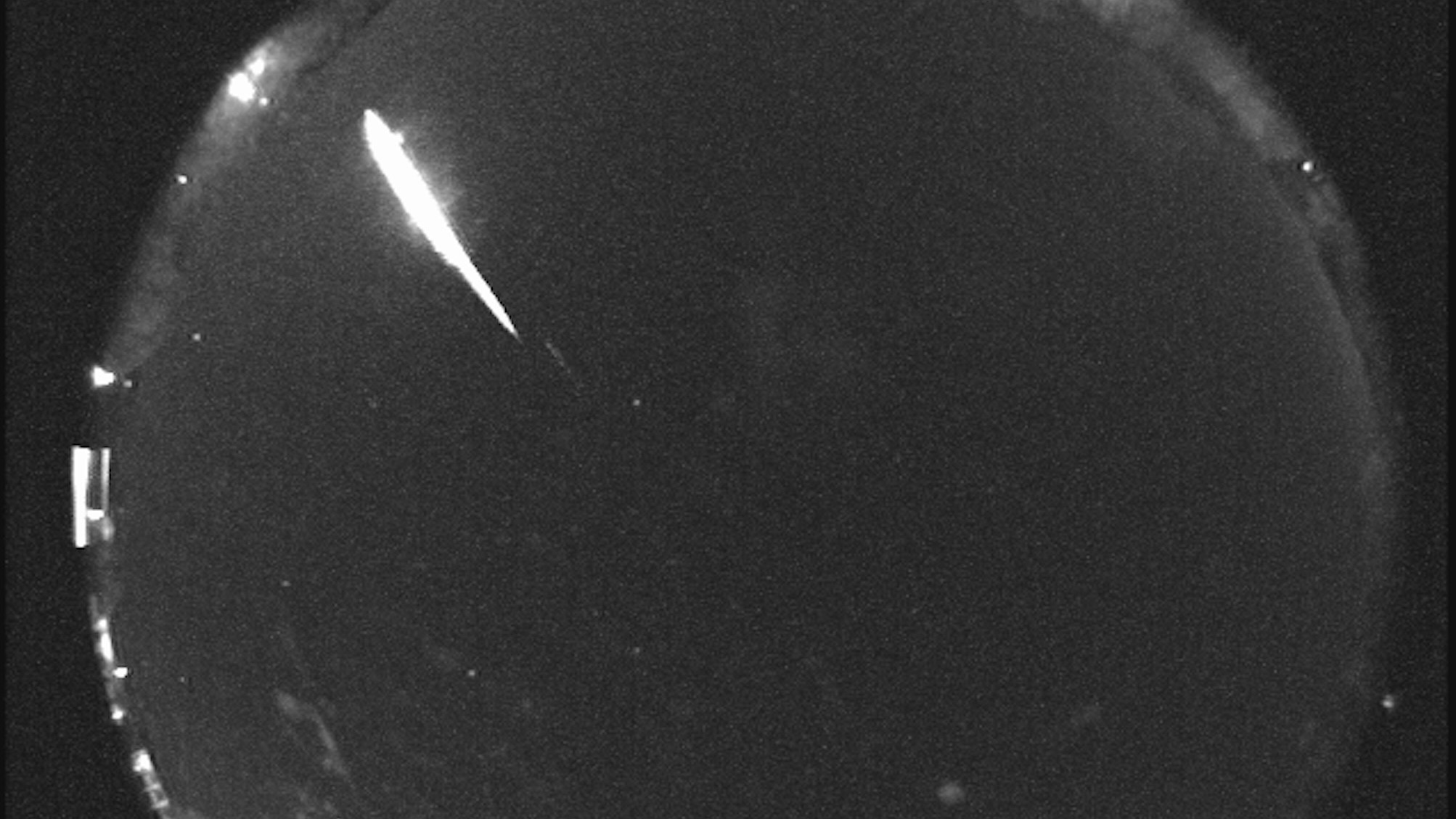
If skies are clear during this upcoming week, be sure to take a few moments to gaze upward. You just might be lucky and catch a glimpse of a spectacular sky sight — a Taurid meteor.
The Taurid meteors are a weak, long-lasting, diffuse shower, visible during the first half of November. They are slow, with a high proportion of fireballs. Late-night viewing will be hampered somewhat by light from the waning moon until about Nov. 9, but rates of 10 meteors per hour can occur anytime until Nov. 13. Rates of three or four per hour can be seen from late October through November's end.
The Taurids are unusual in that many of the meteors can be seen in the evening as well as in the morning, since the shower's radiant, or apparent origin point — about 5 degrees south of the famous Pleiades star cluster — is fairly high all through the night. (Your clenched fist held at arm's length covers about 10 degrees of sky.)
The higher a shower's radiant, the more meteors appear everywhere in the sky. The Taurid debris stream contains noticeably larger fragments than those shed by other comets, which is why this meteor shower occasionally delivers a few unusually bright meteors known as "fireballs."
The Taurids are the slowest meteors of any major shower, encountering Earth at "only" 17 miles (27 kilometers) per second. "The Taurid stream is noted for its many brightly colored meteors," Jeff Wood wrote in WGN, the newsletter of the International Meteor Organization. "Although the dominant color is yellow, many orange, green, red and blue fireballs have been recorded."
Related: Taurid meteor shower 2023: When, where & how to see it
Born from Comet Encke
The Taurid meteors are debris from the periodic Comet 2P/Encke, which has the shortest known orbital period for a comet, taking only 3.3 years to make one complete trip around the sun.
As it turns out, 2023 is one of those years where this comet is sweeping through the inner solar system. It made its closest approach to Earth on Sept. 24, at a distance
of 83.7 million miles (134.6 million km). It arrived at perihelion — its closest point to the sun — on Oct. 22.
Get the Space.com Newsletter
Breaking space news, the latest updates on rocket launches, skywatching events and more!
The comet was first sighted in 1786 by French astronomers Pierre Méchain and Charles Messier. Caroline Herschel was the next to sight it in 1795, followed by Jean-Louis Pons in 1818. None of these observers had any clue that what they all had observed was the same comet. But in 1819, German astronomer Johann Franz Encke published a paper in which he concluded that all of these observations were of the same object, and predicted that it would return in 1822.
It did. And as such, Encke became only the second person to correctly forecast the
return of a comet, in much the same way Edmond Halley had done a century
earlier. That explains the object's "2P" designation: it's only the second comet recognized to be periodic.
As a result, the comet now bears Encke's name — even though Encke himself apparently never took the time to gaze at it through a telescope!
Diminishing intervention from the moon

Want to see great sky sights up close? We recommend the Celestron Astro Fi 102 as the top pick in our best beginner's telescope guide.
On Nov. 5, the last quarter (half) moon rises at around 11:40 p.m. But with each passing night, the moon will be rising on average about 50 minutes later, and the window of dark sky hours (prior to moonrise) opens a little wider.
By the morning of Nov. 9, the moon — now just a slender sliver, which will also be hovering dramatically close to the planet Venus — will not rise until around 2:45 a.m. and will provide very little interference for meteor watchers.
Joe Rao serves as an instructor and guest lecturer at New York's Hayden Planetarium. He writes about astronomy for Natural History magazine, the Farmers' Almanac and other publications. Follow us on Twitter @Spacedotcom and on Facebook.
Join our Space Forums to keep talking space on the latest missions, night sky and more! And if you have a news tip, correction or comment, let us know at: community@space.com.

Joe Rao is Space.com's skywatching columnist, as well as a veteran meteorologist and eclipse chaser who also serves as an instructor and guest lecturer at New York's Hayden Planetarium. He writes about astronomy for Natural History magazine, Sky & Telescope and other publications. Joe is an 8-time Emmy-nominated meteorologist who served the Putnam Valley region of New York for over 21 years. You can find him on Twitter and YouTube tracking lunar and solar eclipses, meteor showers and more. To find out Joe's latest project, visit him on Twitter.









